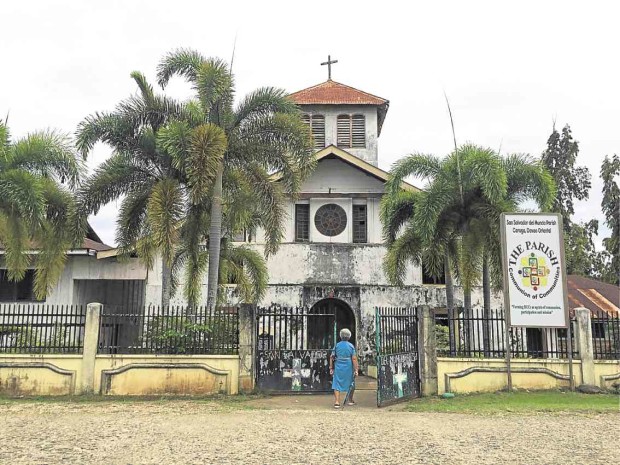
The San Salvador del Mundo Church is one of the most enduring symbols of Christianity in the country. —PHOTOS BY NICO ALCONABA
CARAGA, DAVAO ORIENTAL—The nondescript stone, wood and concrete structure can be shrugged off easily as another small town church at the edge of the oldest settlement in Mindanao.
As one enters its fenced premises, however, the San Salvador del Mundo (Savior of the World) Church offers a peek into Caraga’s rich history—religious and otherwise.
Mindanao’s oldest church, built in 1877 and completed in seven years, has survived natural and manmade calamities for over 130 years. It stands on a promontory facing the Pacific Ocean, an enduring symbol of Catholic faith in Davao Oriental province and a beacon of hope for Catholics in this part of the country.
The San Salvador del Mundo Church was used as a mission house for the Jesuits who had come to evangelize in eastern Mindanao in the 19th century.
Built during the incumbency of Fr. Pablo Pastells, head of the Order of the Society of Jesus when Dr. Jose Rizal was exiled in Dapitan in Zamboanga del Norte province, it became a significant symbol of Christianity not only in Caraga, but also in the Philippines.
It was unveiled as a national historical site on July 16, 2012. During the ceremony, the National Historical Commission of the Philippines cited its crucial role as the origin of Christianity “in this part of the country.”
At the church entrance are muted remnants of the past: the century-old narra hardwood posts, a bell made in 1802 and a huge baptismal font dating back to the 19th century. Inscribed on the wooden door is the date of church completion.
After Spain ceded the Philippines to the United States following the signing of the Treaty of Paris in 1898, priests from the Foreign Mission of Quebec served as church administrators in 1939, followed by Maryknoll missionaries in 1961, and Filipino priests under the then Diocese of Tagum in 1978. During its centenary in 1984, the church was turned over to the newly created Diocese of Mati.
“The church’s history is almost as old as the town’s,” said Antonio dela Peña, 51, one of the church workers. He noted that the church was a repository of religious records, some of them over a hundred years old.
Caraga, a first-class municipality of about 40,000 people as of the 2015 census, has at least 32,000 Catholics, according to local government records.
The church endured its biggest test of faith yet in 2012 when Typhoon “Pablo” (international name: Bopha) slammed into Davao Oriental with powerful winds and torrential rains. Hundreds of people were killed in the province and thousands of houses were destroyed.
“We really felt it was a miracle that the church was not destroyed,” Dela Peña said. “It gave people a sense of hope that despite the devastation around, the church was still there, standing.”
Devotees from Davao Oriental and elsewhere have made San Salvador del Mundo Church one of their must-see destinations during the annual “Panaw-Duaw” (pilgrimage) each year, Dela Peña said.
Daphney Cañete, municipal tourism officer, said the local government had earmarked funds to help preserve and restore the church’s religious and cultural riches following its inclusion as one of the country’s heritage sites.